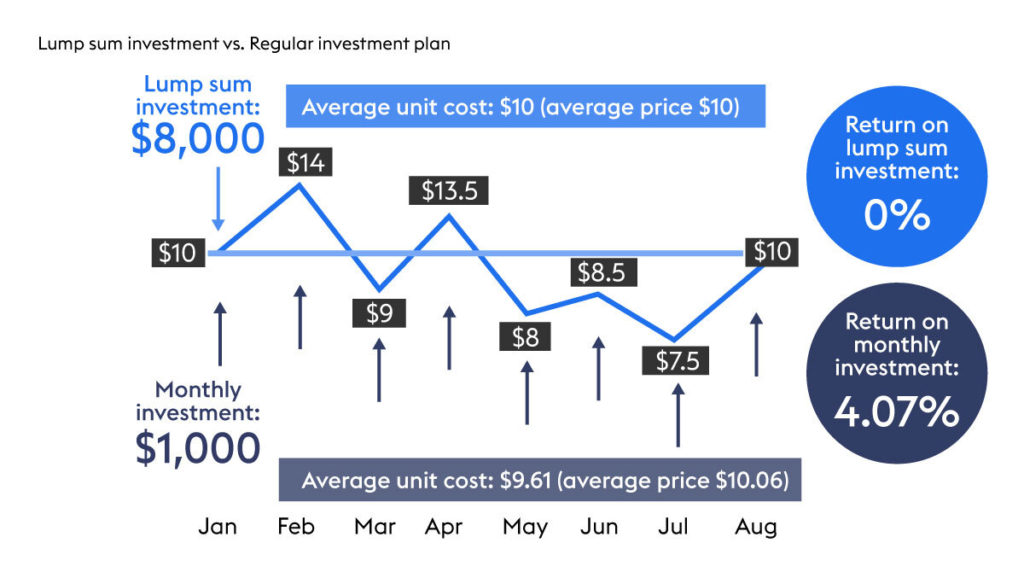They say “slow and steady wins the race”, and this applies to investing as well.
Dollar-cost averaging is a great way to invest your money. That’s because it helps you buy more shares of a company when they are lower in cost, and fewer shares when the price is higher.
So, what does that mean for you? In short, it can mean lower risk and more money in your pocket.
In the long term, dollar-cost averaging could have a substantial impact on your wealth.
How Dollar-Cost Averaging Works
Dollar-cost averaging is a way to buy more of an investment at different price points, putting volatility on your side rather than allowing you to be negatively impacted by it. It takes the emotion out of investing and can be used regardless of market performance.
The best part about dollar-cost averaging is that it does not matter how low or high the market is at any given moment because you are still getting the same number of shares, just spread out over time and at different price points. It also allows you to see stronger returns in the long-run rather than if you bought and sold your investments regularly, as the market historically trends upwards over time.
Dollar-Cost Averaging Benefits
How can you benefit from dollar-cost averaging? Dollar-cost averaging is a great way to reduce the risk and volatility of investing, and can be used regardless of market performance.
Dollar-cost averaging allows you to buy more shares when the stock price is low and fewer shares when it is high. This method can help you reduce your average cost per share over time, even when the price fluctuates.
Dollar-Cost Averaging Versus Timing the Market
When the market is going up, dollar-cost averaging may seem like a bad idea because you’re buying more shares at a higher price. But if the stock’s value goes down later, then those extra shares you bought at a higher price are now worth more.
Timing the market can be tricky and does not always work, but dollar-cost averaging is an easy way to make sure you’re always buying shares at a lower cost.
Dollar-Cost Averaging Versus Lump-Sum Investing
Dollar cost averaging helps you begin investing with small amounts of money rather than investing a large amount all at once. This helps you stick to a regular investing schedule without worrying about being able to afford a large deposit.
For example, if you deposit $8,000 in one go at a fixed price point, you end up with an average unit cost of $10.
On the other hand, if you invest $1,000 per month over 8 months, you can purchases your investments at a different price point each month. This then results in an average unit cost of $9.61.

With regular investing through dollar cost averaging, you also can ensure that you invest even when the market is down. While continuing to invest during market dips can be intimidating, you risk missing out on future growth if you stop investing or withdraw your existing investments.
Those who remain invested during declining markets, for instance, historically have seen better returns than those who withdraw their money and then try to time a market return, according to Charles Schwab research.
How can you start investing using Dollar Cost Averaging?
Use the DCA approach when investing with SmartWealth, and reap the benefits of dollar-cost averaging. Invest regularly and create a long-term return with SmartWealth.



